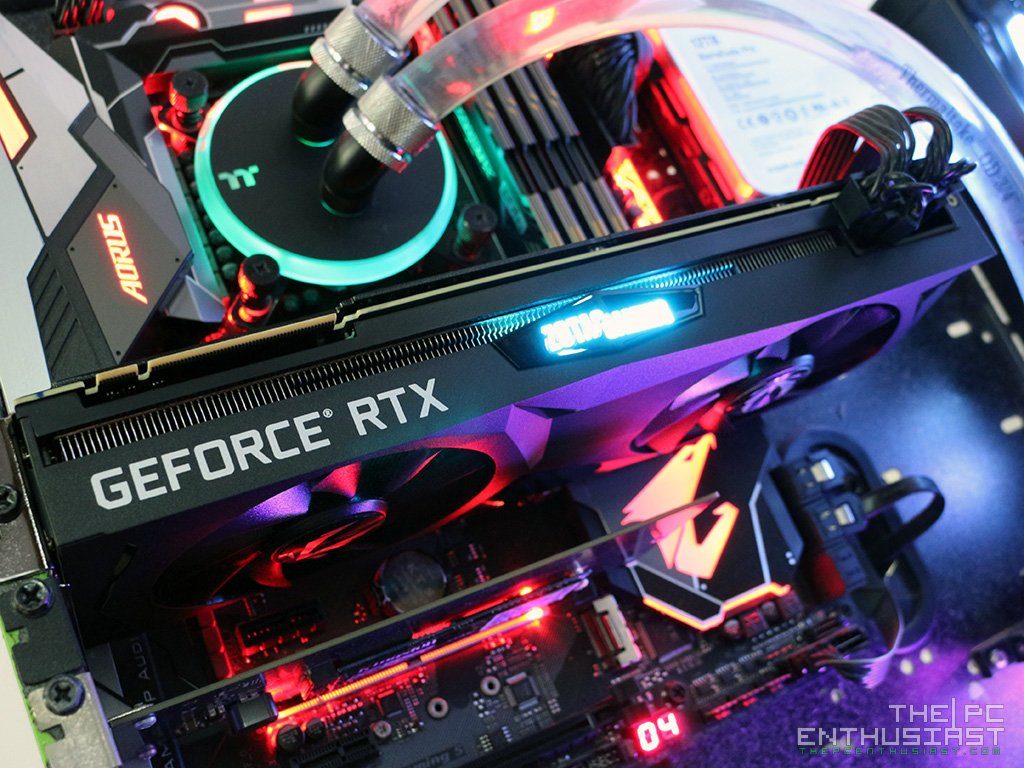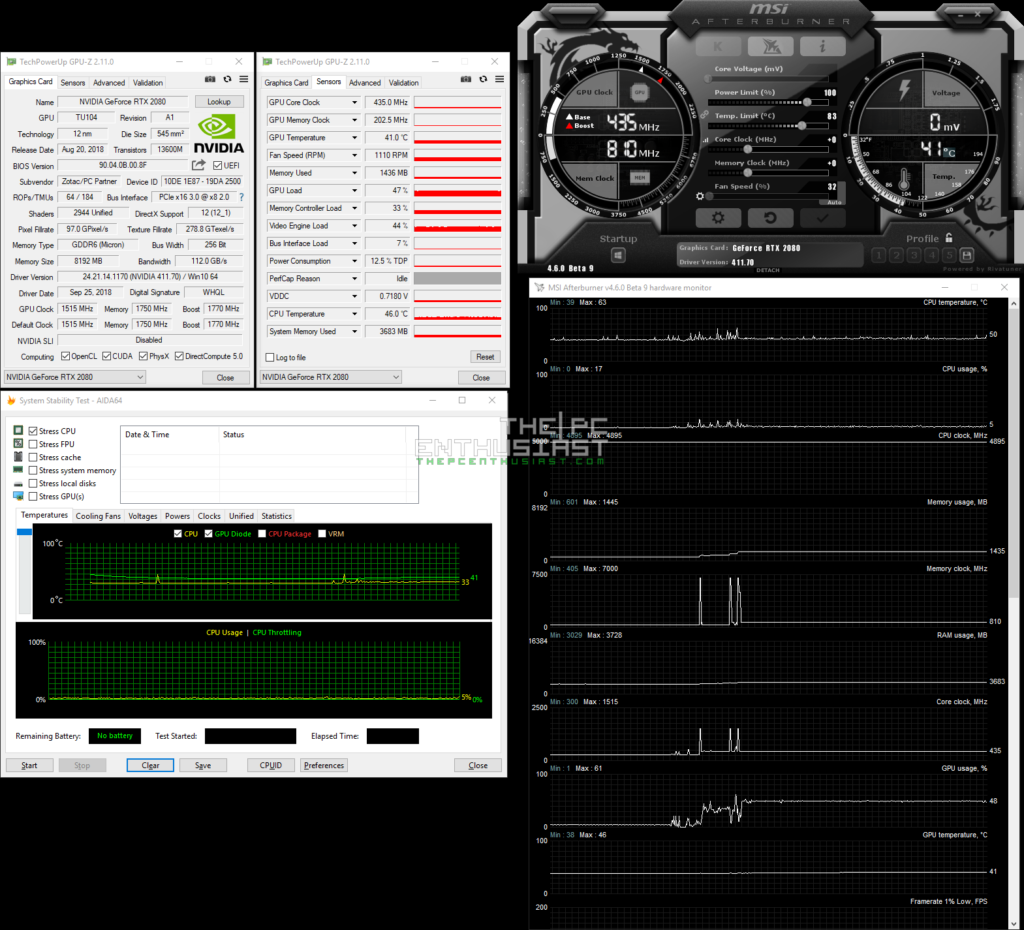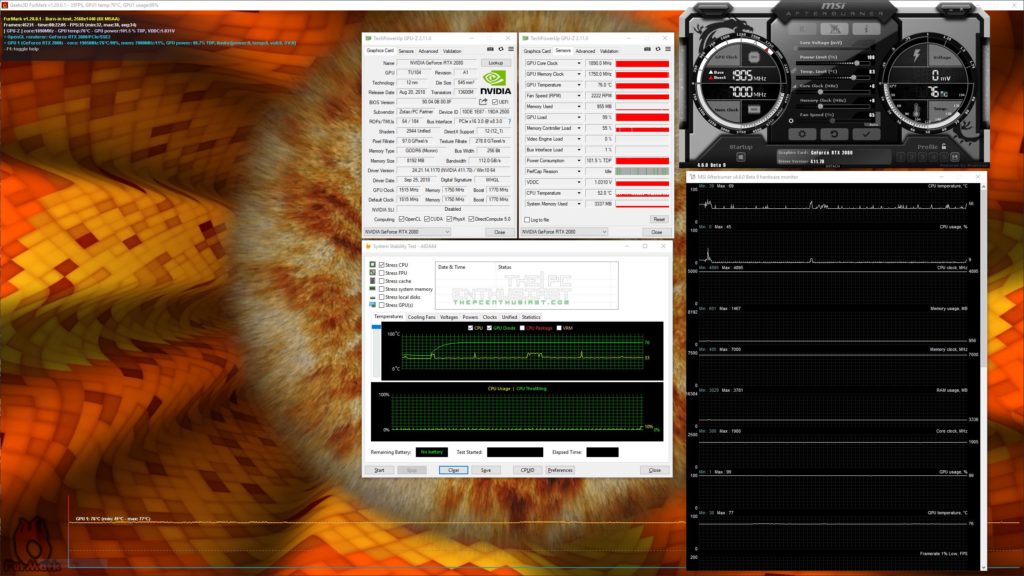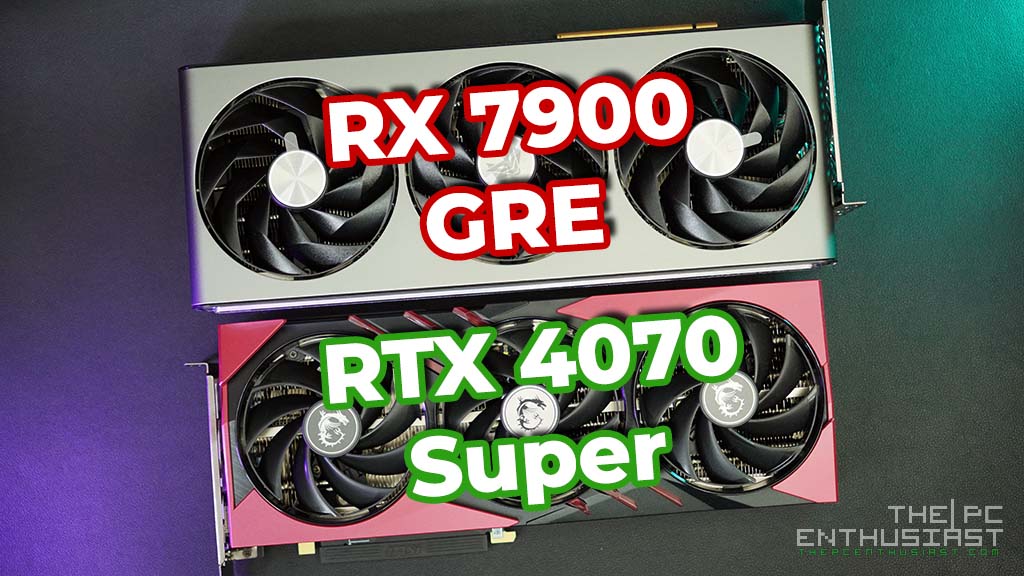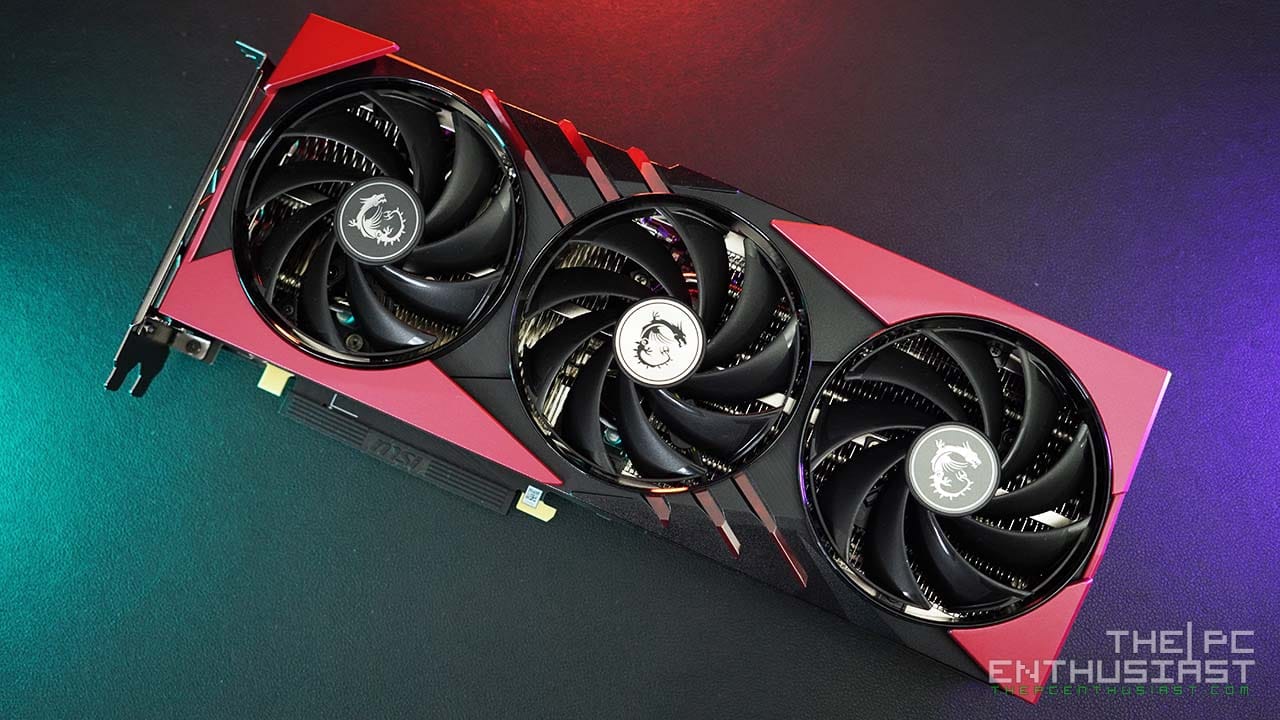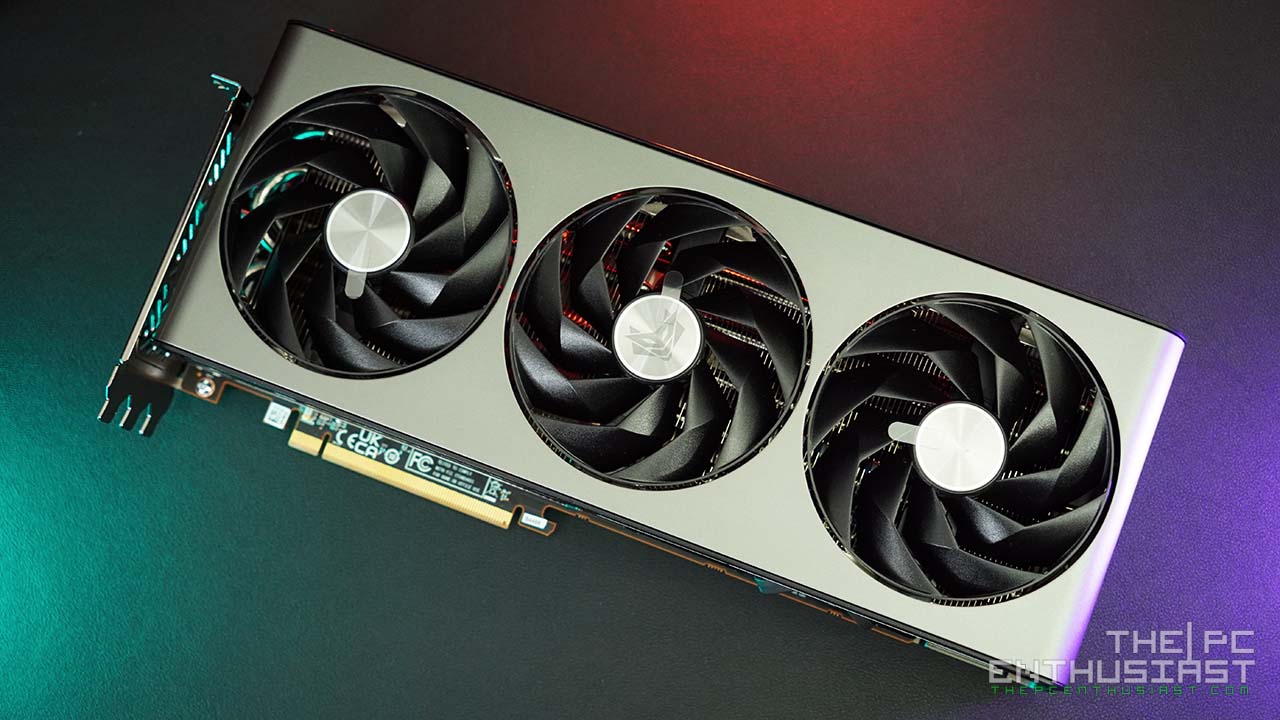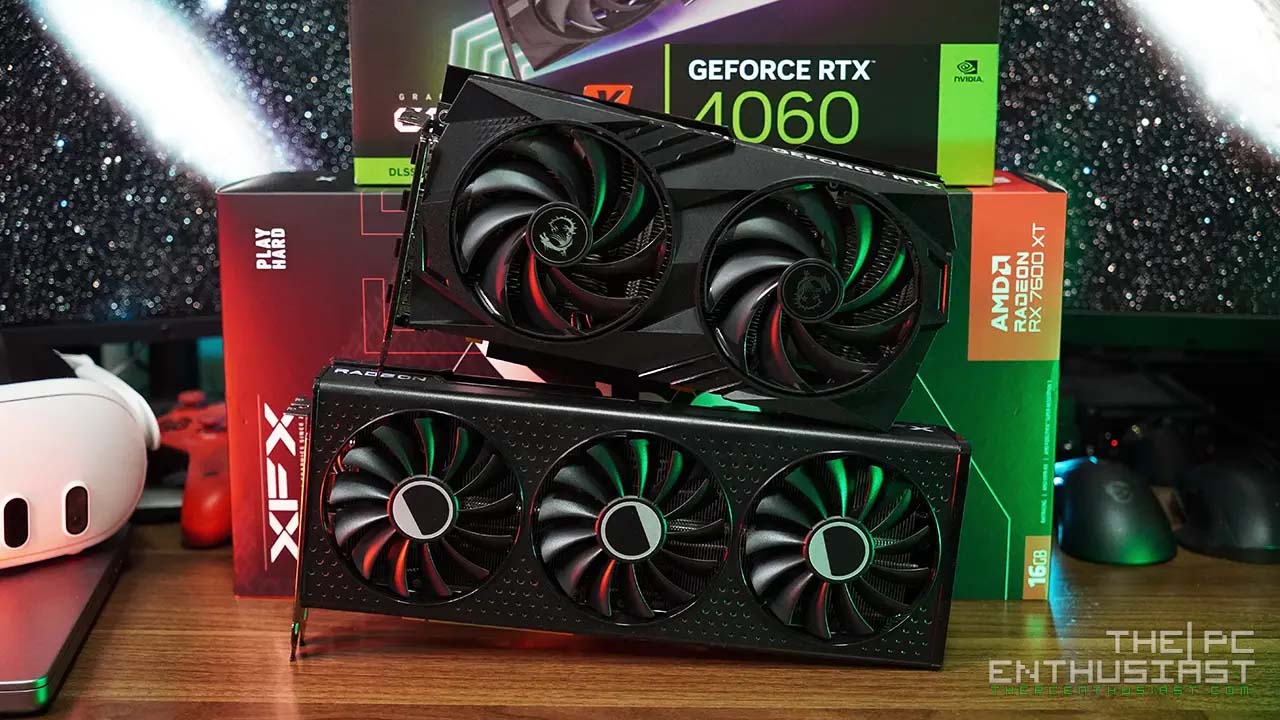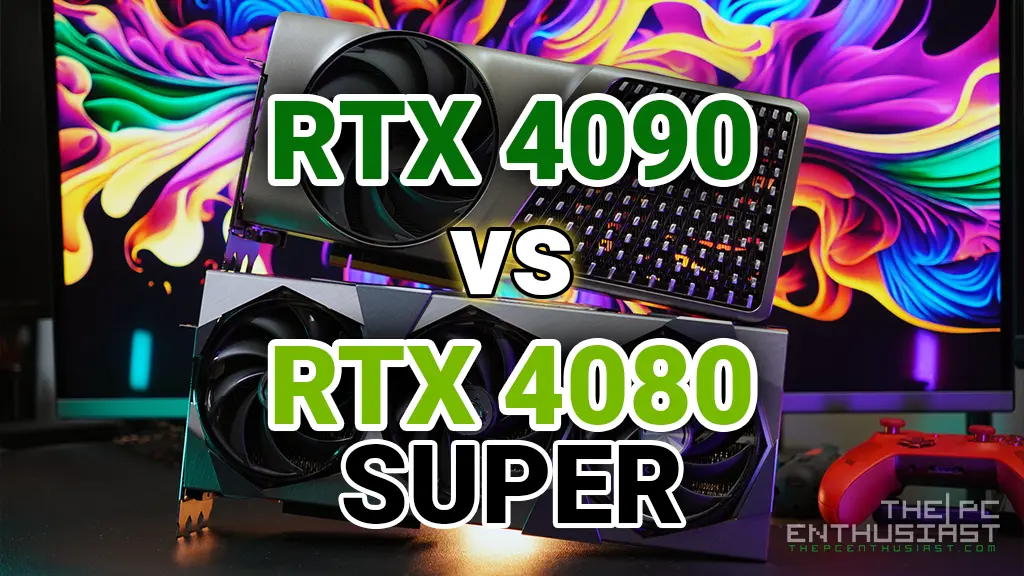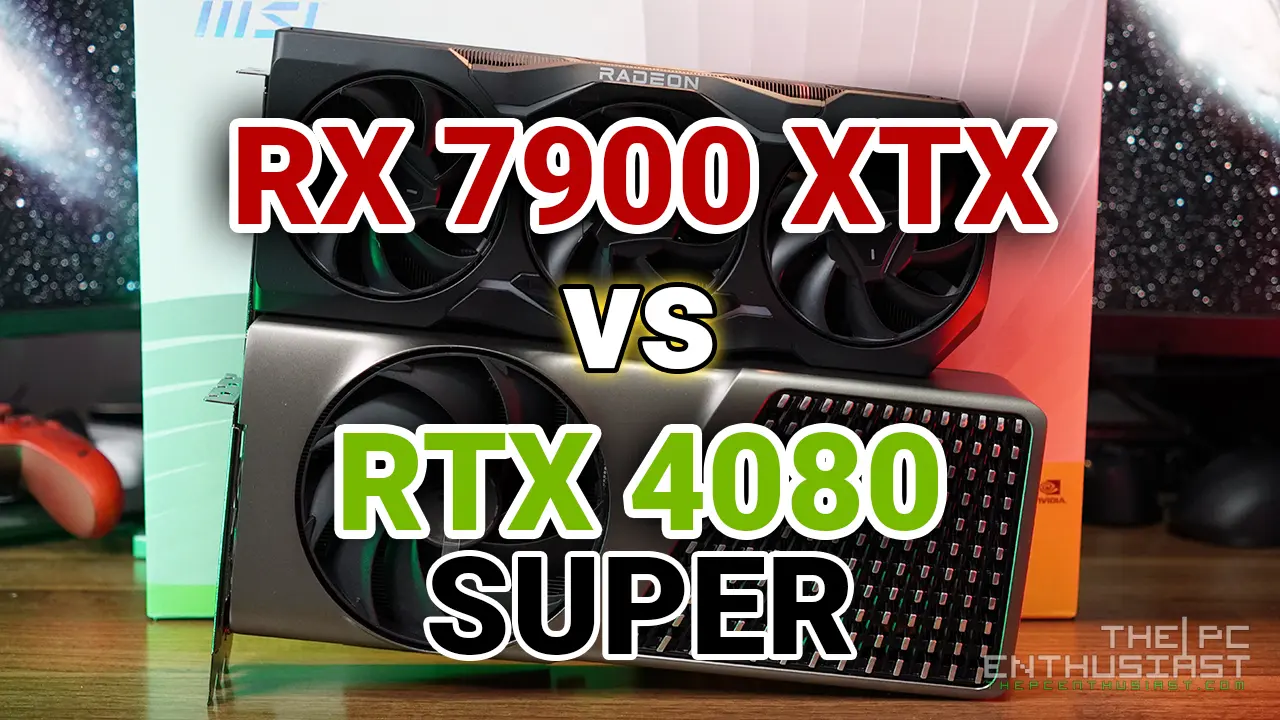Zotac GeForce GTX 2080 Twin Fan Test Setup
In testing and benchmarking the Zotac Gaming GeForce RTX 2080 Twin Fan, our test system is powered by an 8th Gen. Intel Core i7-8700K, overclocked to 5GHz. The CPU is installed on a Gigabyte Z370 Aorus Gaming 5 motherboard. Below are the rest of the system specifications:
Operating System: Windows 10 Pro 64bit
Motherboard: Gigabyte Z370 Aorus Gaming 5
Processor: Intel Core i7-8700K
CPU Cooler: Thermaltake Pacific RL360 LCS with Pacific W4 RGB CPU Block.
Memory: Crucial’s Ballistix Sport AT DDR4-3000 32GB
Graphics card: Zotac Gaming RTX 2080 Twin Fan
Storage Drives: Kingston KC1000 NVMe SSD 480GB OS
Power Supply: Seasonic 850W Prime Titanium
Chassis: Thermaltake Core P5
When I tested the Zotac RTX 2080 Twin Fan, I was using the GeForce driver version 411.70 for Windows 10 64bit. All games are tested in three resolutions, namely: 1920×1080 or full HD, 2560×1440 or WQHD and 3840×2160 or 4K ultra HD. For the synthetic benchmarks, I used the benchmark tools from 3DMark and Unigine 2. I also used the following games to test the graphics card: Battlefield 1, Deus Ex: Mankind Divided, Final Fantasy XV, Ghost Recon: Wildlands, Mass Effect: Andromeda, Middle Earth Shadow of War, Monster Hunter World, Shadow of the Tomb Raider, Star Wars Battlefront II and The Witcher 3 Wild Hunt.
Below are GPUz and GPGPU screenshots of the Zotac Gaming GeForce RTX 2080 Twin Fan:
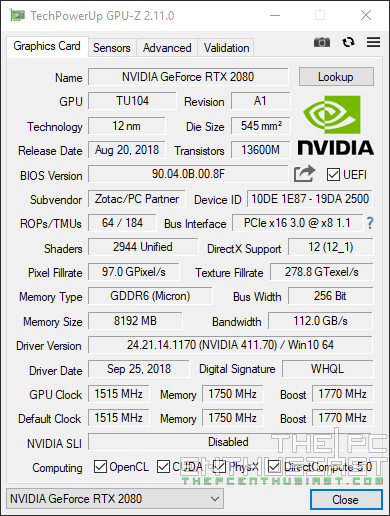
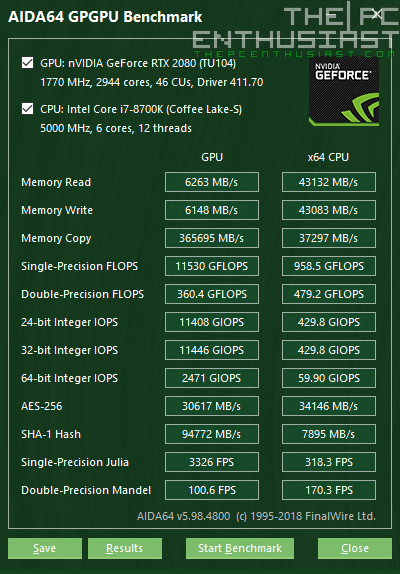
Zotac Gaming GeForce RTX 2080 Twin Fan – Noise and Temperature
This Zotac RTX 2080 doesn’t have a (very) large heatsink and it’s pretty much the usual dual fan cooler design like you see on most mainstream or higher end graphics card. Since it doesn’t have a beefier heat sink, the fans do not stop at all even when in idle. Higher end models have a Zotac Freeze Fan Stop feature, but this one does not. Nevertheless, the graphics card is still generally very silent during idle to light load situation. In full load, the fans may become audible (depending on your case or chassis or setup in general), but they are not (obnoxiously) loud at all.
On light to medium load scenarios, the fans’ speed is around 1,100 RPM and the temperature is just around 41° degrees Celsius; with a GPU load of around 48%. At this point fans are very silent and almost inaudible.
On full load, the Zotac GeForce RTX 2080 Twin Fan manages to keep everything under 76° to 77° degrees Celsius. Fan speed doubles and goes up to around 2,200 RPM. Now this is not the fastest or maximum fan speed. I think it’s just running at around 50% or 60%, I’m not sure. MSI Afterburner’s fan speed monitor is not working or it is not detecting the fan speed properly. Nevertheless, the fans / graphics card in general remains silent; audible (specially if you are close and have an open case), but generally speaking not noisy or loud.
Like I mentioned in the introduction of this review, the Zotac Gaming GeForce RTX 2080 Twin Fan performs very similar or the same with the RTX 2080 Founders Edition. Check out the benchmark results on the next following pages and see for yourself.

